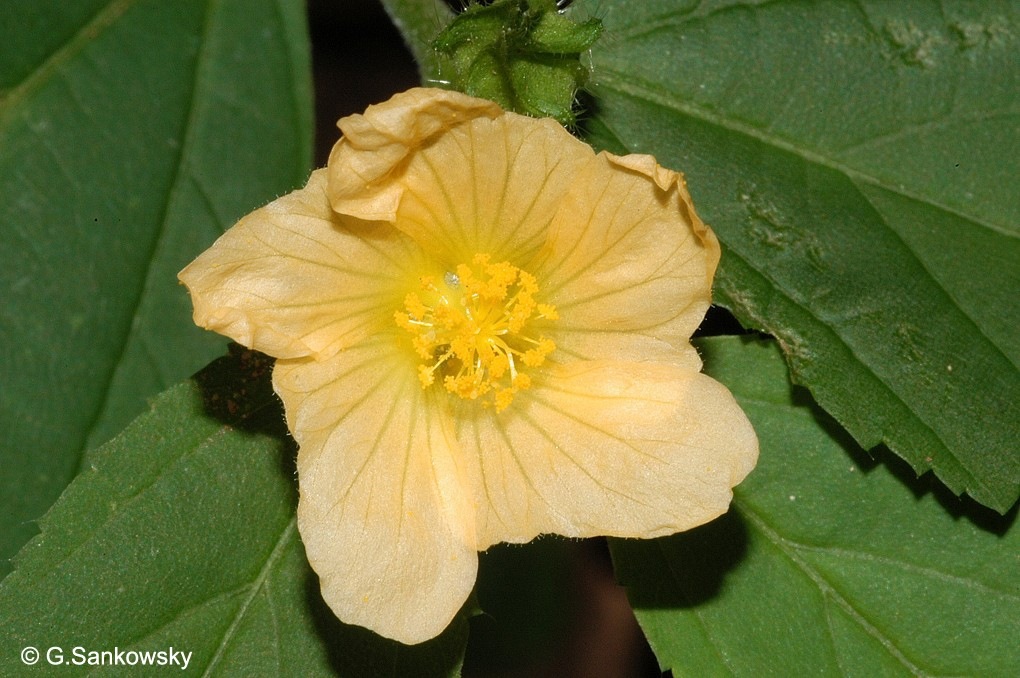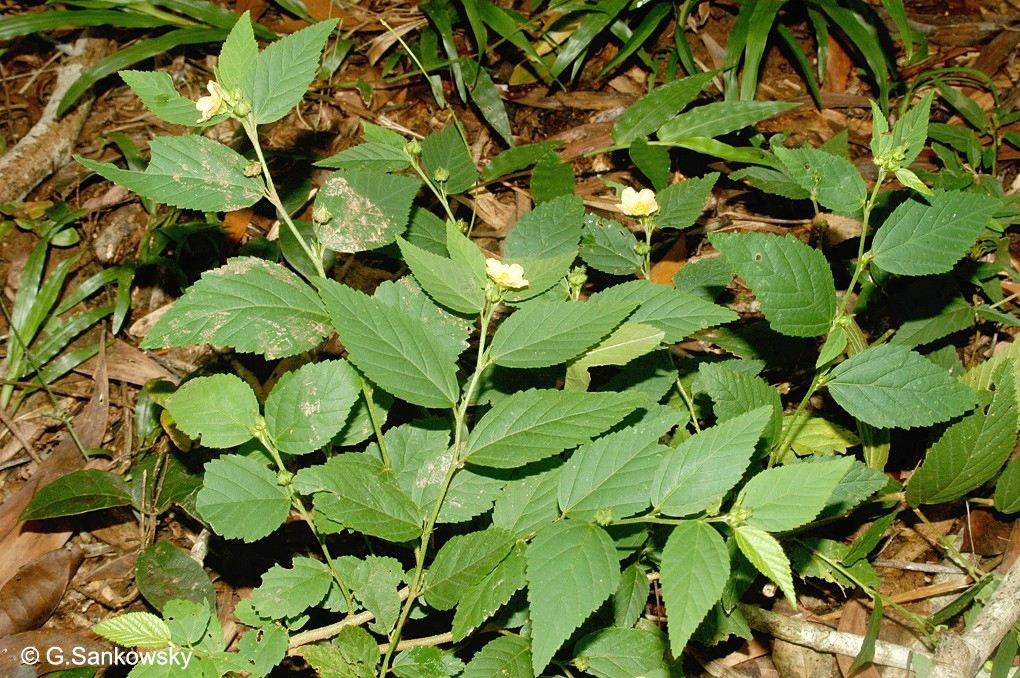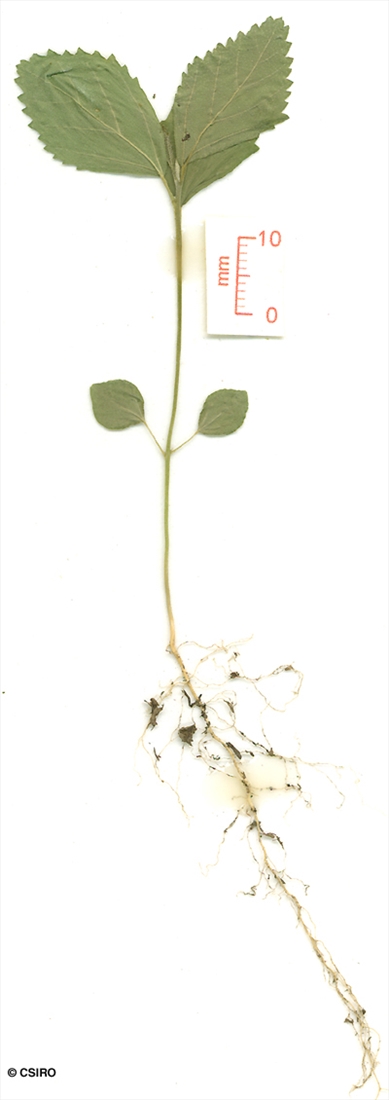Australian Tropical Rainforest Plants - Online edition
Sida rhombifolia L.






Linnaeus, C. von (1753) Species Plantarum 2: 684. Type: India ?, lecto: Herb. Clifford, BM. Fide Borssum Waalkes (1966).
Sida Retusa; Arrowleaf Sida; Sida, Common; Sida, Arrowleaf; Sida-weed; Sida; Queensland Hemp; Paddy's Lucerne; Paddy Lucerne; Cuba Jute; Common Sida; Broomjue Sida; Sida, Broomjue
Usually flowers and fruits as a herb but can grow into a shrub about 1 m tall.
Inflorescences usually one flowered. Peduncles and pedicels not clearly differentiated so individual flowers appear as though on long slender pedicels. Calyx about 4-6 mm long, 10-ribbed, especially at the base. Small stellate hairs present on the outer surface of the calyx. Corolla about 6-8 mm long. Stamens more than 25, filaments fused to form a tube which is fused to the base of the petals. Pollen minutely spinulose. Ovary about 10-locular. Stigmas about ten. Stigmatic surfaces white, located on the ends of the stigmas or style branches.
Peduncles slender, about 30-40 mm long. Fruit consists of a dry persistent calyx containing up to ten wedge-shaped plumed nutlets which are attached by fine threads. Seeds cordate. Cotyledons folded and crumpled.
Cotyledons ovate or suborbicular, about 6-10 x 6-10 mm. Petiole about as long as the cotyledons. First pair of leaves with toothed margins, underside of leaf blades sparsely clothed in stellate hairs. At the tenth leaf stage: leaf blade, petiole, stipules and stem clothed in small stellate hairs. Stipules filiform, about 5-10 mm long. Basal part of the leaf blade without teeth on the margin. Stem bark strong and fibrous when stripped. Seed germination time 7 to 37 days.
Occurs in WA, NT, CYP, NEQ, CEQ and southwards as far as Victoria. Altitudinal range in northern Australia from near sea level to 1200 m. Grows in disturbed areas and on the margins of rain forest. This species has all the trappings of an introduced weed but specimens were collected by some of the early explorers so it must be native or was an early introduction. Bentham (1863:196) states: 'introduced from Mauritius'.
Food plant for the larval stages of the Common Eggfly Butterfly. Common & Waterhouse (1981).
This species may have medicinal properties. (http://squid2.laughingsquid.net/hosts/herbweb.com /herbage/A24765.htm)
This species is one of the best known native plant remedies. Many people still swear by it as a cure for diarrhoea and claim its action to be superior to that of any patent medicine. It is popular in folk medicine in Malaysia. In addition, the plant has magical attributes, and amongst other uses, was carried as a protection when elephant hunting. Cribb (1981).
It is probably unlikely that Australian pig shooters could be convinced to carry sprigs of leaves as protection against irate boars. Likewise, it is unlikely that they would utilize the magical qualities of this plant to protect their dogs from porcine plunderers of rain forest or farmland.





